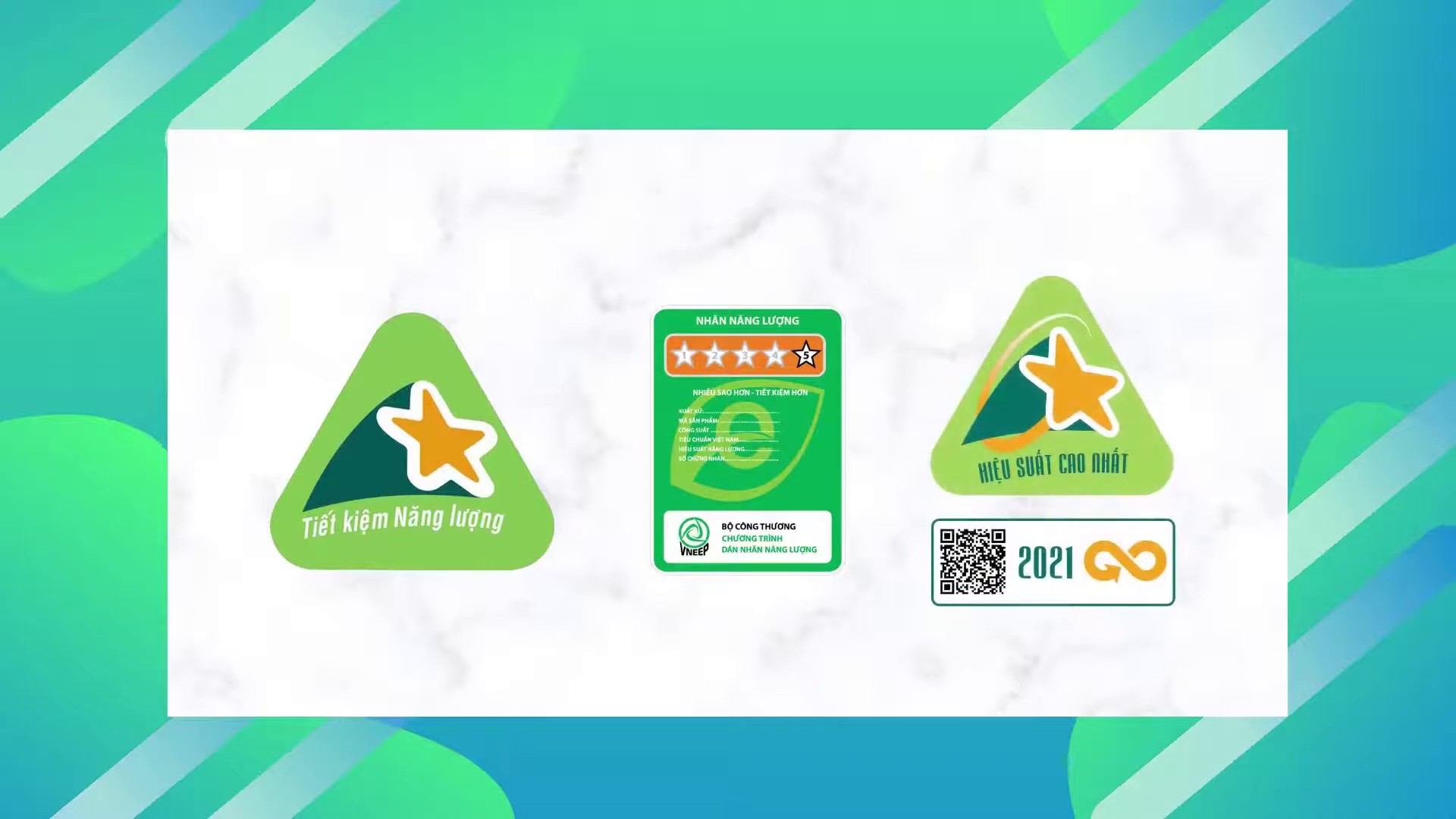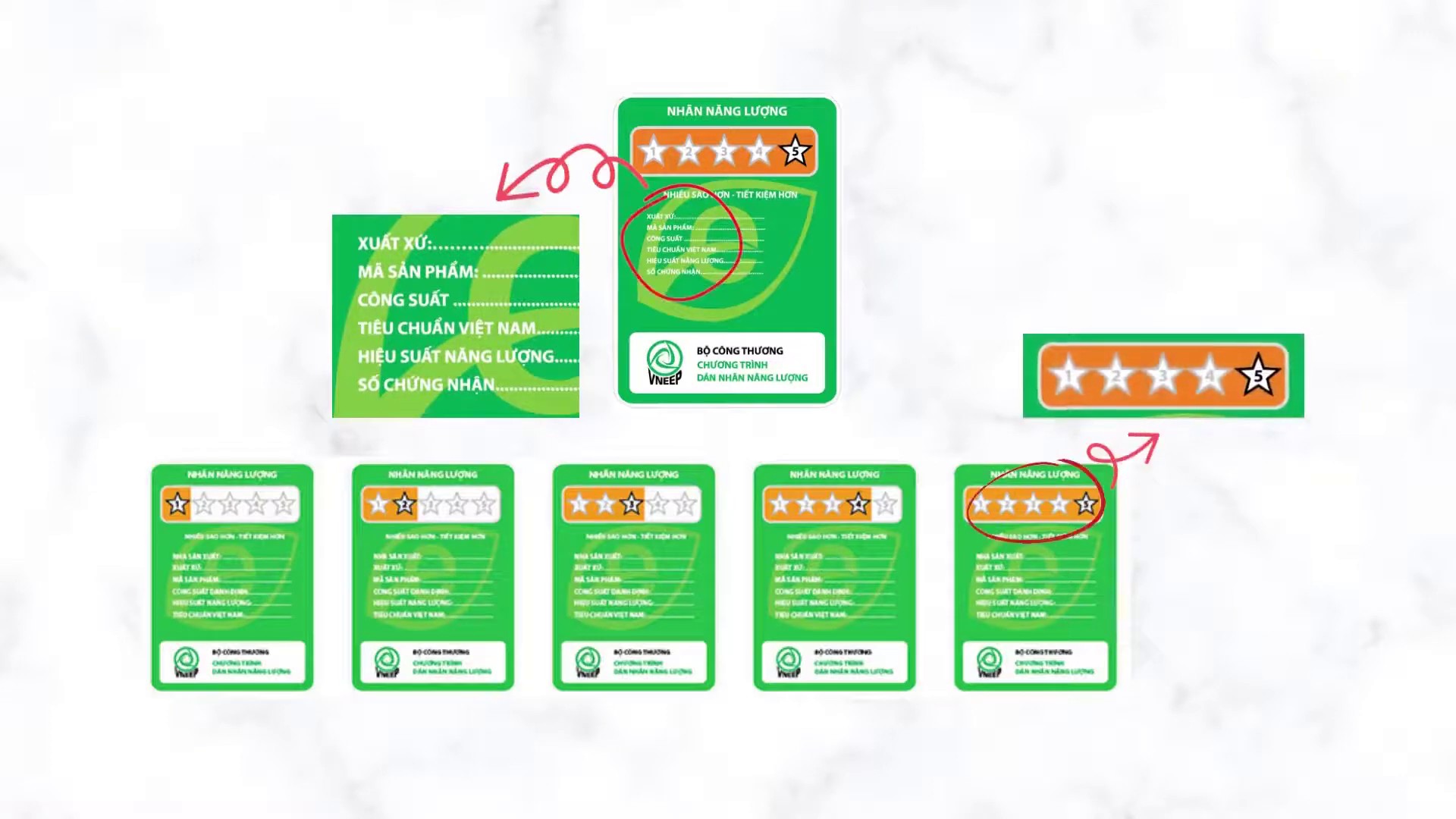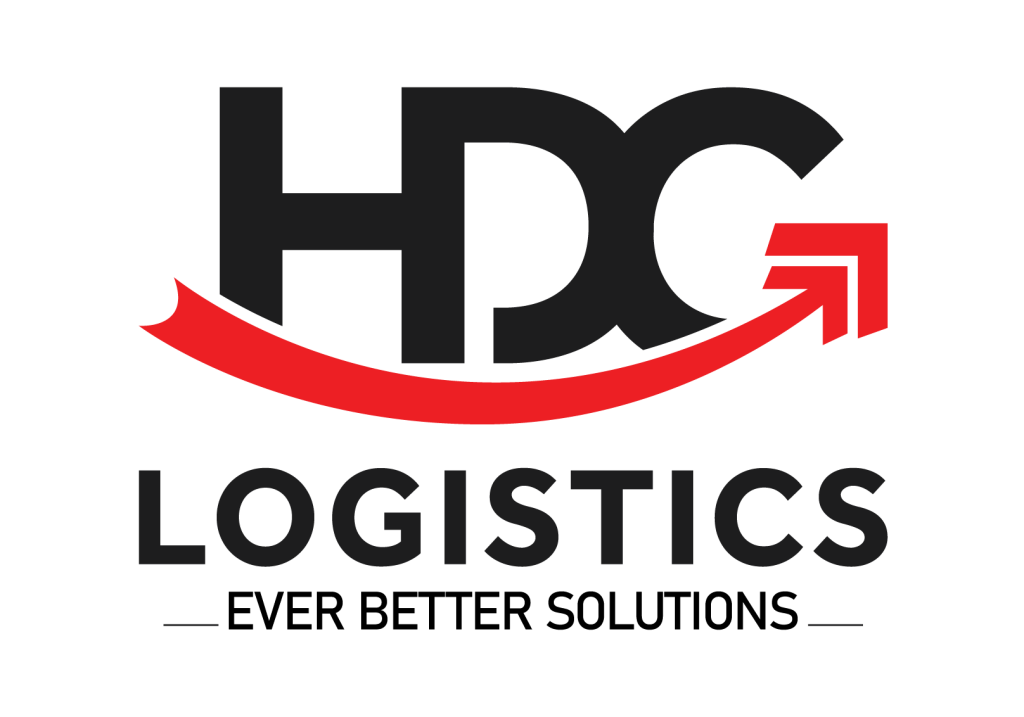Energy labeling for vehicles and appliances that use electricity is not only a mandatory requirement, but also a useful tool that provides detailed information about the energy consumption of a product. As a result, consumers can easily compare and choose energy-efficient products, contributing to environmental protection and reducing costs. So how does the energy labeling procedure work? Let’s explore this issue in detail in the article below!

What is Energy Labeling?
Energy labeling is the application of an information label (stamp) to electronic devices, in order to provide consumers with parameters about the energy efficiency of that product. The main purpose of energy labeling is to help consumers easily compare energy efficiency between different products, thereby making the optimal choice of more energy-efficient products, contributing to environmental protection and reducing electricity costs.
Energy efficiency is an important indicator, which is used to evaluate and compare the power efficiency of electronic devices. Simply put, energy efficiency indicates how efficiently the device converts the electrical energy consumed into useful functionality. The higher the energy efficiency of a device, the more efficient and economical it uses electricity.
Energy Labeling Classification
Energy labeling is divided into three main categories:
- Confirmation energy label: The label is applied to products that meet or exceed the energy efficiency standards of the Ministry of Industry and Trade.
- Comparative Energy Label: The label displays information about energy consumption, capacity, equipment origin, and is classified by a star scale. The more stars the label, the more energy-efficient the device.
- Highest Energy Efficiency Label: Labels are applied to products that achieve energy efficiency levels that exceed the 5-star standard. Labels in the shape of energy stars, QR codes contain product details, and circular symbols.

Items that require energy labeling
Decision 04/2017/QD-TTg has clearly stipulated items that need to be labeled with energy, including:
Household appliance group:
- Straight Tube Fluorescent Lamp
- Compact fluorescent lamps
- Electromagnetic and electronic ballasts for fluorescent lamps
- Air Conditioner
- Refrigerator
- Washing machine for home use
- Rice cooker
- Electric fan
- Video Recorder
- LED Lights
- Water heater with reserve
Office and Commercial Equipment Group:
- Copiers
- Computer Monitors
- Printer
- Commercial Refrigerator
- Laptops
Industrial equipment group:
- Distribution Transformer
- Electric motor
Group of means of transport:
- Cars with 9 seats or less
- Motorcycles
- Motorcycles

Where to label energy?
According to Circular 36/2016/BTC, the labeling of energy is carried out in a voluntary form and the responsibility belongs to the enterprise. Specifically, after having the results of the energy efficiency test, the enterprise will make its own energy labeling declaration dossier, then print and apply the energy label on its products. This means that businesses must be fully responsible for the accuracy and truthfulness of all information declared on the label.
Energy Labeling Procedure
Energy labeling declaration dossier
Pursuant to Circular 36/2016/BTC, the dossier for announcement of energy labeling includes the following components:
- Energy labeling notice: This is an official document made by the enterprise, which clearly states information about the enterprise, product, type of registered energy label (comparison label or certification label), and commits to take responsibility for the accuracy of the information.
- Test results issued by the testing organization for the product model: This is a detailed report on the results of the inspection and evaluation of the energy efficiency of the product, conducted by an accredited testing organization.
- Documents proving that the testing laboratory has fully met the conditions: In case the test is carried out by a foreign testing organization, the enterprise needs to provide documents proving that the testing laboratory fully meets the standards and technical requirements.
- Expected energy label sample: This is the design of the energy label that will be affixed to the product, including all the information as prescribed.
Energy Labeling Process
The energy labeling process includes the following steps:
Step 1: Energy Efficiency Testing
Businesses need to take product samples to designated energy efficiency testing laboratories for testing and evaluation. Note that within 30 days from the date of bringing the product to the warehouse, the enterprise needs to submit the test results to Customs.
Step 2: Submit results and customs clearance
After the test results are available, the enterprise submits to the Customs for customs clearance, ensuring that the product meets energy efficiency standards.
Step 3: Prepare the dossier and apply for confirmation of publication
Enterprises prepare a complete set of energy labeling declaration dossiers, including the components mentioned above, and submit them to the competent authorities for confirmation of declaration.
Step 4: Print and label
After being confirmed for publication, the enterprise prints the energy label according to the approved sample and affixes it to the product before putting it on the market.



 Tiếng Việt
Tiếng Việt 日本語
日本語 中文 (中国)
中文 (中国)

